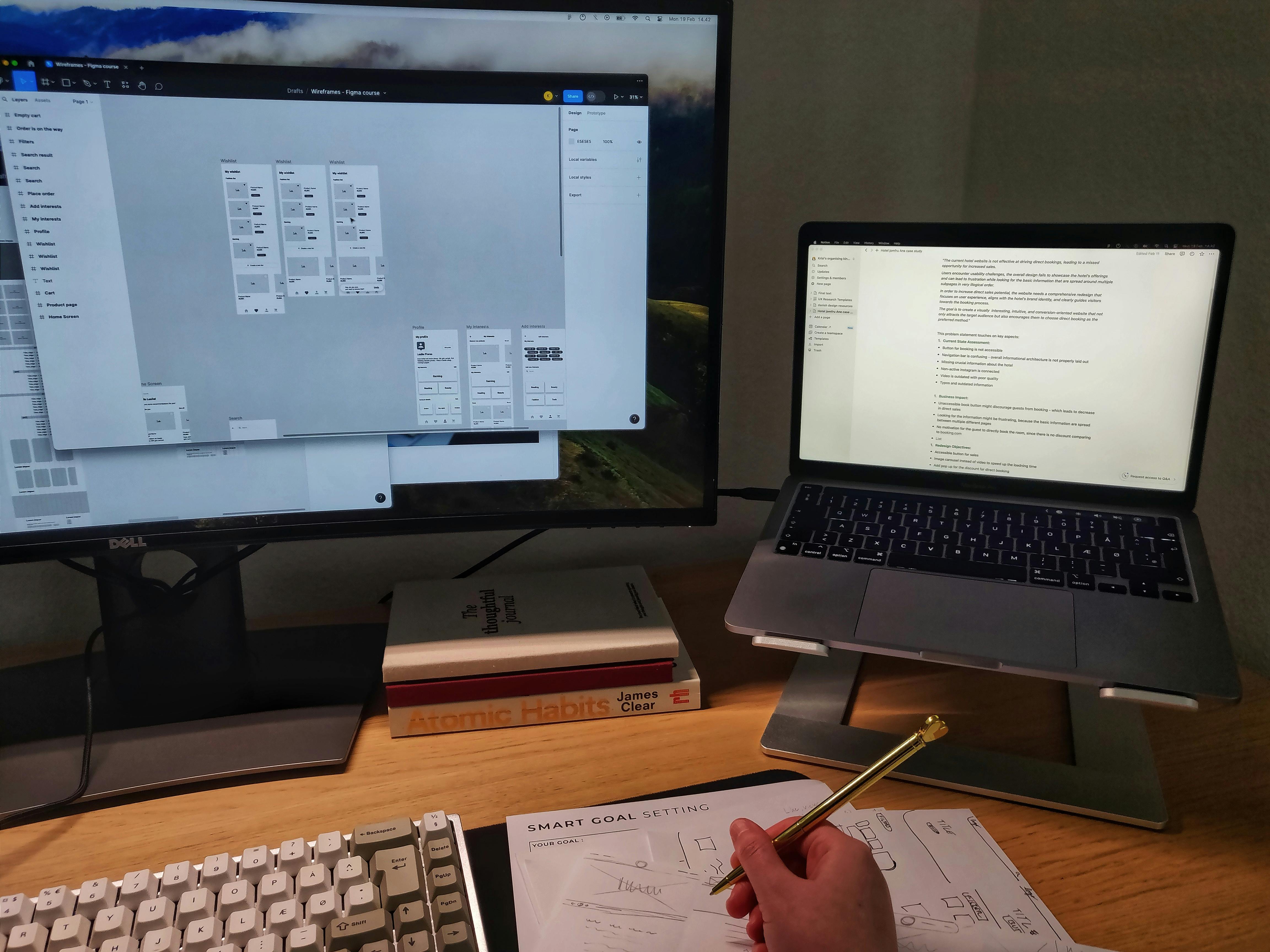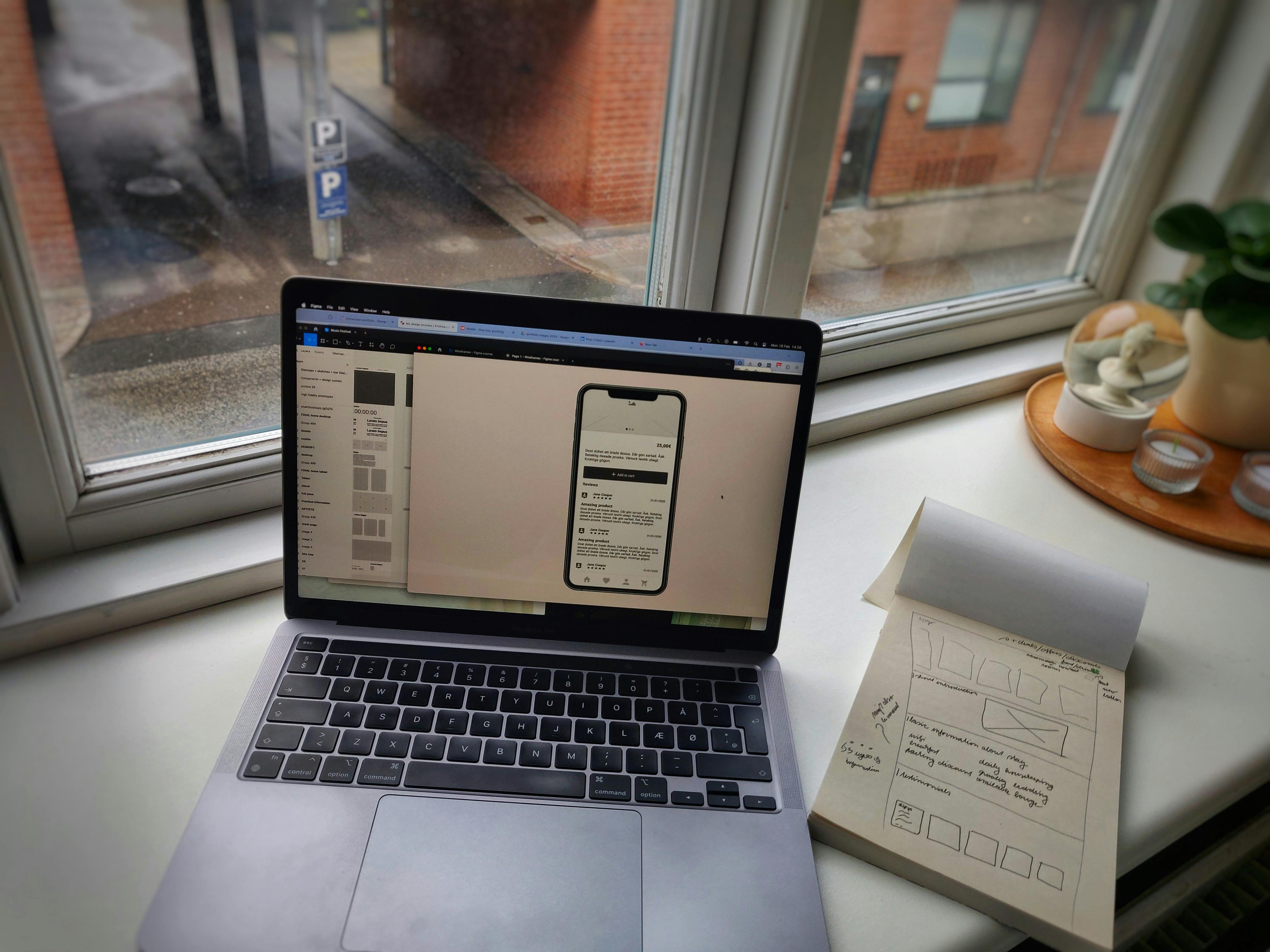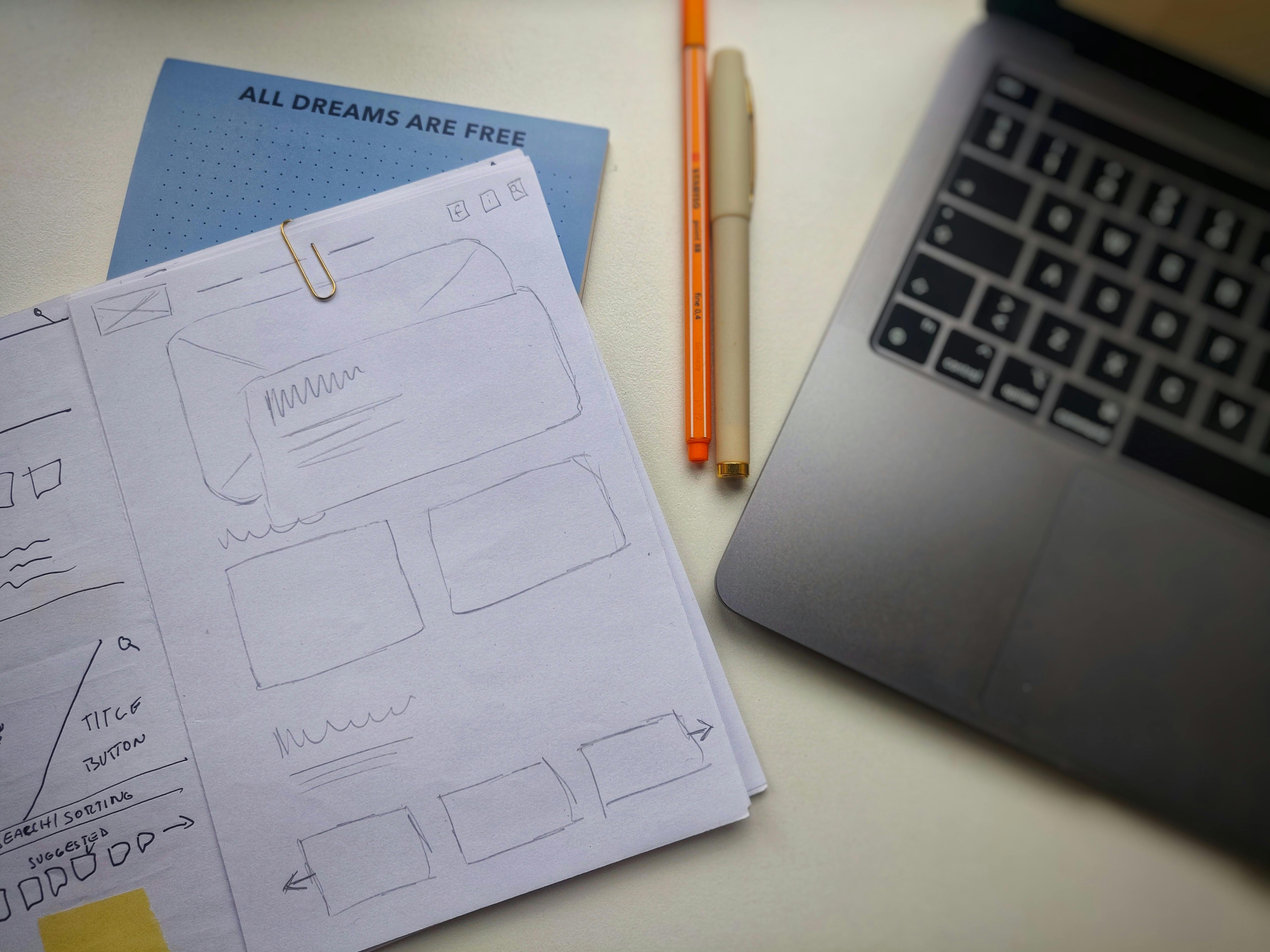DesignProcess
Designing with purpose: my process, principles, and the ways I work
Design principles
01 Simplicity
Simplicity is not just about making things look clean; it's a philosophy that places user understanding and interaction at the centre. By prioritising clarity in every design choice, I aim to create an experience that feels intuitive and effortless for users.
02 Functionality
Being functional means that every element, every pixel has a purpose beyond aesthetics. My focus is on creating designs that unify beauty with function. It's about creating not just visually appealing interfaces but ensuring they serve their intended purpose with efficiency and effectiveness.
03 Consistency
The glue that binds every element together, creating a clean user experience. Across different parts of a project, I emphasise the importance of maintaining a consistent design language. Whether it's colours, typography, or interaction patterns, this approach provides familiarity, making the user's journey smooth and intuitive.
04 Empathy
Design isn't just about pixels and layouts it's about people, therefore I believe that empathy is a guiding principle. Understanding the feelings, needs, and perspectives of users is at the core of my design philosophy. It involves exploring their experiences, challenges, and emotions. Through user research, testing, and active listening, I aspire to create designs that not only meet functional needs but resonate with users on a deeper, more meaningful level.

Design process
01 Defining the problem
I begin by understanding the problem or potential opportunity by sorting through requirements, and identifying primary goals. Is the focus on enhancing sales, boosting web traffic, or perhaps a redesign/rebranding with new features? Clarifying these objectives sets the groundwork for a strategic design solution.
02 Getting on board
During this stage, I find value in reviewing the past and studying competitors for insights into future possibilities. Analysing user experiences helps pinpoint pain points and weaknesses, while assessing the product's evolution and comparing it to competitors establishes a clear problem statement and refined project goals as the goal for this phase.
03 Creating the concept
Fun part of the process is exploring various ideas obtained through creative brainstorming, conceptualisation. The gathered date allows me to envision potential solutions. I translate these ideas into rough sketches or wireframes to visualise the concepts. The aim is to gather a diverse range of possibilities, laying the foundation for a solid prototype that can be refined later on.

04 Prototype Development
This next step is my favourite part – developing interactive prototypes. I prefer using high-fidelity Figma prototypes, incorporating as many clickable elements as possible to enrich the testing experience. The complexity of the prototype varies, tailored to factors such as time, budget, and overall project requirements.
05 Feedback and refinement
In this phase, I refine the prototype based on feedback from external sources. Presenting the concept to various individuals, I collect opinions, explore alternative options, and gather diverse ideas. Seeking a fresh perspective is vital for me to prevent tunnel vision, as prolonged focus can obscure the bigger picture. Early involvement of team members is very welcomed to benefit from varied expertise and insights, fostering a collaborative approach to shaping the design.
06 Parting the ways
In an ideal scenario, I would participate in continuous updates to the website for long-term improvement, but simultaneously, I’d like to ensure that the final deliverables provided to the client are accessible and comprehensible for future contributors or team members who may take over the project. This dual consideration balances the need for ongoing enhancements with the importance of maintaining accessibility and clarity in the project's handover.

Design philosophies
01 HTML and CSS Insights
In the beginning, I saw coding as a bit of an unnecessary detour in my learning journey. Yet, realising how it actually helps bring design to life has become a real game-changer in my skillset. The ability to empathise, not just with users but also with my team, sets clear expectations from the get-go, steering us away from potential issues down the road.
02 Staying Informed and Open-Minded
Embracing new trends, technologies, and perspectives ensures a dynamic and adaptable approach. This mindset not only fuels creativity but also fosters a continuous learning process, pushing the boundaries of what's possible in design.
03 Collaboration Beyond Design
I strongly believe in the power of collaboration, extending beyond the boundaries of design. Engaging with individuals, even those who may not appear design-oriented, brings fresh and diverse insights to the table. In these collaborations, I've found that unique perspectives often lead to innovative solutions. Building bridges between different expertise areas enriches the overall design process and creates unique outcome.
